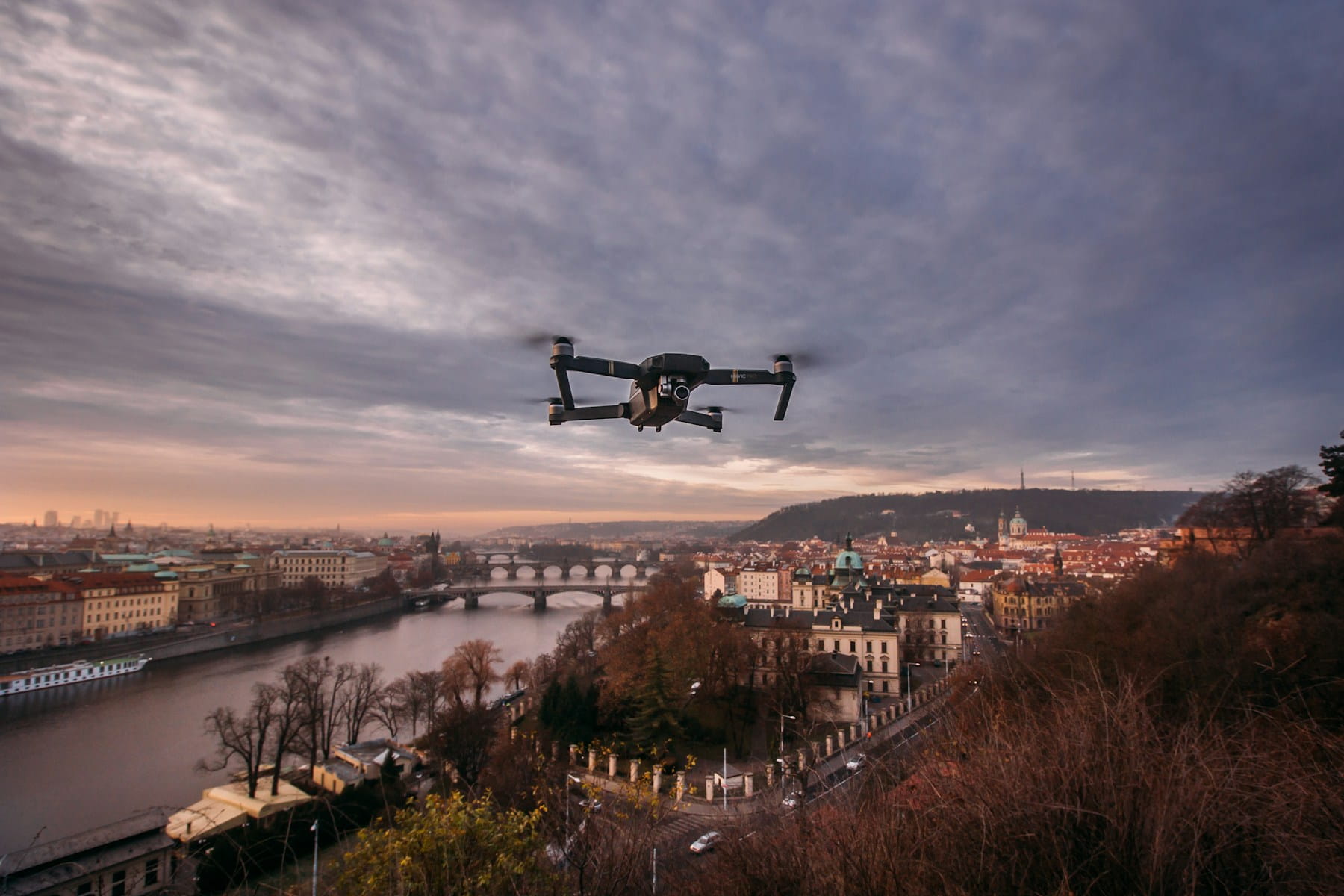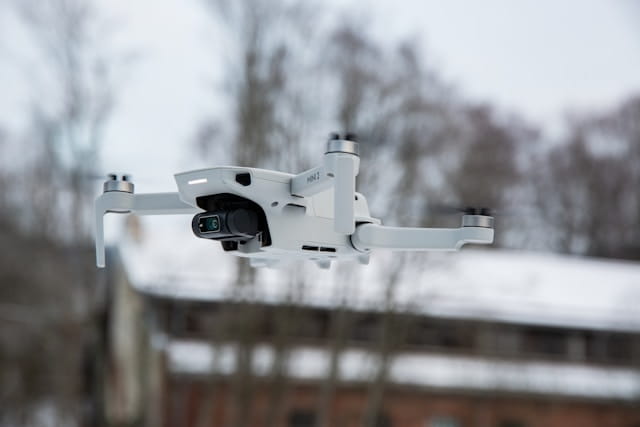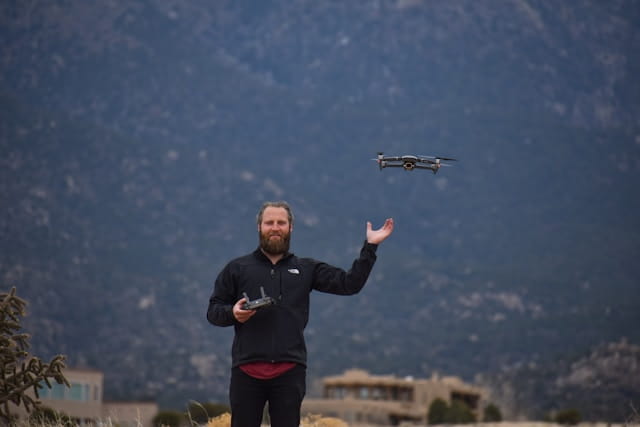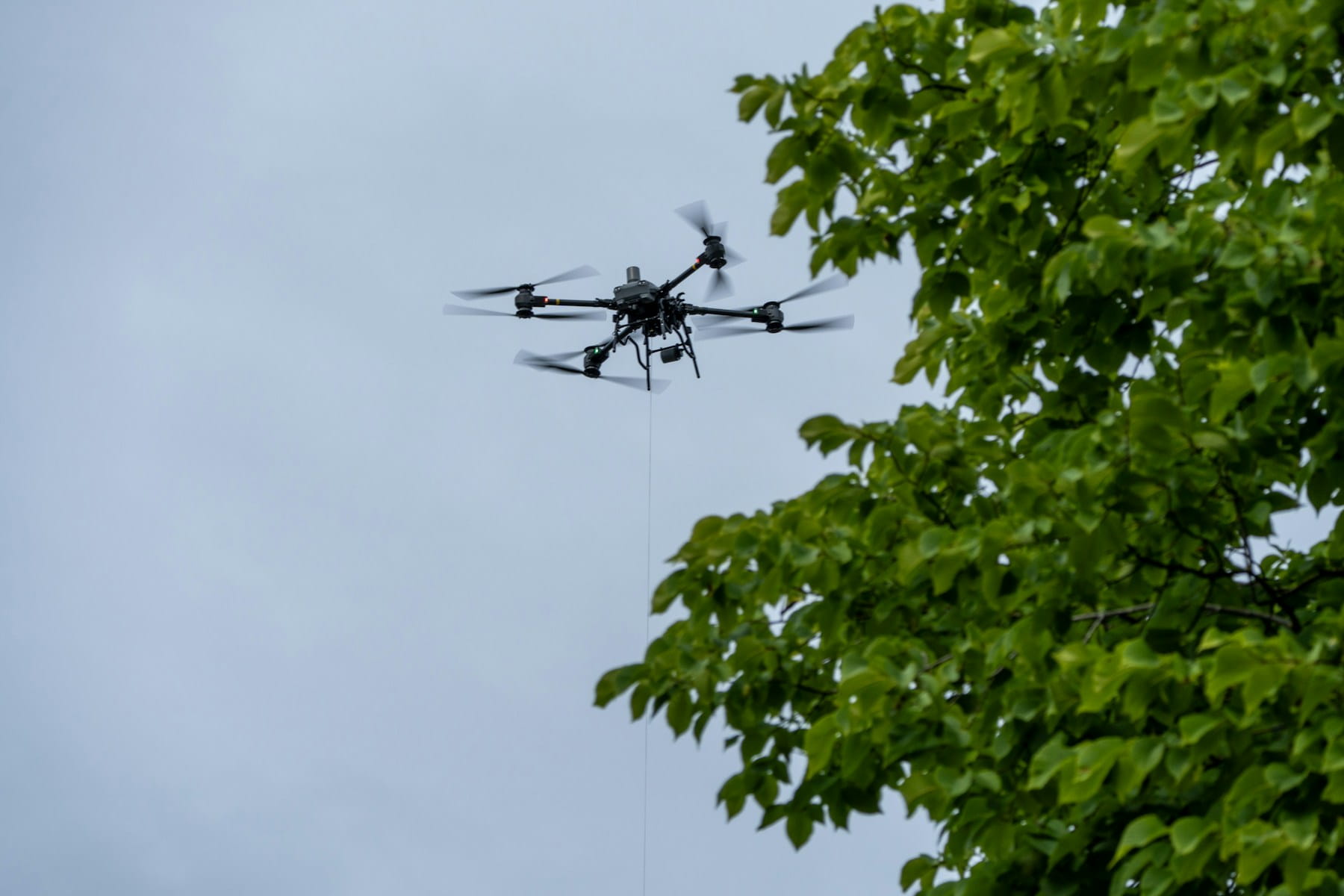Learn how to obtain your EU drone license by understanding regulations, completing training, passing exams, registering as an operator, and maintaining compliance for legal drone operations across Europe.
The European Union transformed drone operations forever when it introduced standardized licensing requirements across member states. What started as a patchwork of national regulations became a unified system that pilots must navigate to fly legally.
Getting your EU drone license isn't just paperwork - it's your ticket to operating drones across 27 countries plus Switzerland, Iceland, and Norway. The process involves understanding different categories, completing training, passing exams, and maintaining compliance with evolving regulations.
Table of contents
- Understanding the EU drone regulation framework
- Open category operations and requirements
- Drone operator vs drone pilot responsibilities
- Registration process for drone operators
- EU drone pilot certification requirements
- Basic certificate (A1-A3) training and exam
- Additional certificate (A2) requirements
- National aviation authority contacts
- Insurance and liability considerations
- Common compliance mistakes to avoid
- Implementation considerations
Understanding the EU drone regulation framework
The European Aviation Safety Agency (EASA) established three distinct categories for drone operations. Each category has different requirements, restrictions, and licensing procedures that pilots must follow.
Open category covers recreational and low-risk commercial operations. Most hobby pilots and small businesses operate in this category. Drones must weigh less than 25 kg, and operations cannot involve carrying dangerous goods or dropping objects.
Specific category requires authorization from national aviation authorities. Operations involve higher risk scenarios like flying beyond visual line of sight, over crowds, or in controlled airspace. Risk assessments and operational approvals become mandatory.
Certified category applies to large drones or high-risk operations equivalent to manned aircraft. Think passenger transport or cargo operations over populated areas. This category requires aircraft certification, pilot licensing similar to traditional aviation, and operator approval.
The framework also introduced CE class markings on drones. These markings (C0 through C4) indicate which subcategories the drone can operate in. A C2 drone can fly in A2 operations, while a C0 drone works for A1 subcategory flights.
Weight thresholds play a crucial role in determining requirements. Drones under 250g have fewer restrictions but still need registration if equipped with cameras or sensors. The 25kg upper limit for open category operations creates a clear boundary for most commercial users.
Open category operations and requirements
Open category splits into three subcategories based on drone specifications and operational requirements. Each subcategory has distinct rules about where you can fly and what qualifications you need.
A1 subcategory allows flights over uninvolved people but not over crowds. Pilots can use C0 or C1 class drones, with different minimum age requirements. C0 drones have no minimum age, while C1 operations require pilots to be at least 16 years old.
A2 subcategory permits flights near people but requires maintaining safe distances. Operations demand C2 class drones or legacy drones under 2kg with additional pilot certification. The minimum distance from uninvolved people is 30 meters, reduced to 5 meters with low-speed mode activated.
A3 subcategory restricts flights to areas far from people, requiring 150-meter minimum distances from residential, commercial, industrial, or recreational areas. This subcategory accommodates larger drones up to 25kg and serves as the entry point for many commercial operations.
Distance limitations apply universally across subcategories. Pilots must maintain visual line of sight and cannot exceed 120 meters above ground level without authorization. These restrictions ensure safety while providing operational flexibility for legitimate drone activities.
The 250-gram threshold creates an interesting division point. Drones below this weight still require operator registration if equipped with cameras capable of recording personal data. But they skip some training requirements that heavier drones mandate.
Drone operator vs drone pilot responsibilities
The EU regulation creates distinct roles with separate responsibilities and requirements. Understanding these differences prevents compliance issues and ensures proper accountability for drone operations.
A drone operator owns or has operational control of one or more drones. This person or organization bears primary responsibility for insurance, registration, and ensuring pilots have proper qualifications. Operators don't need to fly the drones themselves.
A drone pilot actually controls the aircraft during flight operations. They must have appropriate training certificates and follow operational procedures. Pilots can fly drones they don't own, provided the operator has proper registration and insurance.
One person can hold both roles when they own and fly their own drone. This dual responsibility is common among individual operators but requires meeting both sets of requirements.
Operator responsibilities include:
- Registering with the national aviation authority
- Obtaining appropriate insurance coverage
- Placing registration ID numbers on all drones
- Ensuring pilots have valid certificates
- Maintaining operational documentation
- Reporting accidents and incidents
Pilot responsibilities include:
- Completing required training programs
- Passing certification examinations
- Maintaining current certificates
- Following operational procedures during flights
- Conducting pre-flight safety checks
- Respecting airspace restrictions and no-fly zones
The separation allows businesses to operate drone fleets with multiple pilots. A construction company might register as an operator and employ certified pilots to conduct site surveys. Each pilot needs proper certification, but only the company needs operator registration.
Insurance requirements fall squarely on operators, regardless of who flies the drone. This arrangement protects third parties and ensures someone takes financial responsibility for operations.
Registration process for drone operators
Every drone operator must register with their national aviation authority before conducting any flights. The process varies slightly between countries but follows similar patterns across EU member states.
Registration typically requires basic personal information, contact details, and acknowledgment of safety responsibilities. Business operators provide additional company information and may need to designate responsible persons for compliance matters.
The registration generates a unique operator ID number consisting of country code and alphanumeric sequence. For example, a German operator might receive "DEU.12345" while a French operator gets "FRA.67890." This number stays with the operator regardless of drone changes.
Required information usually includes:
- Full name and address (individuals) or company details (organizations)
- Date of birth (for individual operators)
- Contact information including email and phone number
- Acknowledgment of regulations and safety responsibilities
- Payment of registration fees (varies by country)
Processing times range from immediate online approval to several business days for manual verification. Most countries offer online registration systems that provide instant confirmation and ID number assignment.
Registration fees differ significantly between member states. Some countries charge annual fees while others require one-time payments valid for specific periods. Operators should verify current fee structures with their national aviation authority.
The operator ID must appear on every drone in a visible, durable manner. Engraved plates work best, though some authorities accept printed labels if properly protected from weather and handling. QR codes are acceptable alternatives in certain jurisdictions.
Registration remains valid as long as operators maintain current information and pay required fees. Address changes, business structure modifications, or ownership transfers require registration updates to maintain compliance.
EU drone pilot certification requirements
Pilot certification requirements depend on the subcategory where operations will occur. Each level builds upon previous knowledge while adding specific skills and restrictions.
A1-A3 basic certificate covers fundamental aviation knowledge, safety procedures, and regulatory requirements. This certificate allows operations in A1 and A3 subcategories with appropriate drones. Training covers meteorology, airspace classification, human performance factors, and operational procedures.
A2 additional certificate builds upon the basic certificate with advanced topics like technical knowledge, flight performance limitations, and risk management. This certification enables A2 subcategory operations with their reduced distance requirements from people.
Training programs must come from approved national aviation authorities or their designated providers. Third-party training organizations need specific authorization to offer certification programs that meet EU standards.
Online training predominates for both certificate levels, offering flexibility for pilots to learn at their own pace. Interactive modules, videos, and practice questions help prepare candidates for certification examinations.
Training topics include:
- Aviation regulations and airspace classification
- Meteorology and weather interpretation
- Aircraft performance and limitations
- Human factors in aviation operations
- Safety management and risk assessment
- Emergency procedures and incident reporting
- Privacy and data protection considerations
Examinations test theoretical knowledge through multiple-choice questions covering training materials. Pass rates vary, but most prepared candidates succeed on their first attempt. Unlimited retakes are typically available within training program validity periods.
Certificates remain valid for five years from issuance date. Renewal requires completing refresher training and passing updated examinations to account for regulatory changes and safety improvements.
Age restrictions apply to certain operations. A1 subcategory with C1 drones requires minimum 16 years old, while A2 operations mandate 16-year minimum age. Younger pilots can operate C0 drones in A1 subcategory without age restrictions.
Basic certificate (A1-A3) training and exam
The basic certificate serves as the foundation for EU drone pilot knowledge. Training programs cover essential topics that every drone pilot needs regardless of their specific operational requirements.
Aviation regulations form the core curriculum, explaining how drone operations fit within broader aviation safety systems. Pilots learn about controlled airspace, flight restrictions, and coordination requirements with manned aircraft operations.
Airspace classification becomes critical knowledge as pilots must recognize different airspace types and their associated restrictions. Understanding the difference between Class A controlled airspace and Class G uncontrolled airspace prevents inadvertent violations.
Meteorology training helps pilots interpret weather conditions and make safe operational decisions. Topics include wind effects, visibility requirements, precipitation impacts, and temperature considerations for drone performance.
Human factors address how pilot decision-making, stress, and fatigue affect flight safety. Training covers situational awareness, risk perception, and the importance of maintaining proficiency through regular practice.
Examination structure typically includes:
- 40 multiple-choice questions
- Pass threshold of 75% (30 correct answers)
- 90-minute time limit for completion
- Immediate results upon submission
- Unlimited retake opportunities during training access period
Questions draw from all training modules with emphasis on safety-critical topics. Regulatory knowledge receives heavy weighting since compliance violations carry significant penalties.
Practice examinations help candidates identify knowledge gaps before attempting official certification. Most training providers offer multiple practice tests with different question sets to build confidence.
The certificate allows immediate operation in A1 and A3 subcategories with appropriately classed drones. Pilots can begin commercial operations or recreational flights as soon as they complete operator registration requirements.
Some national authorities require additional local briefings or orientation materials beyond EU-standard training. These supplements address country-specific airspace restrictions, cultural considerations, or operational procedures.
Additional certificate (A2) requirements
A2 certification enables operations with reduced distance requirements from uninvolved people. This certificate opens commercial opportunities that A1-A3 operations cannot accommodate due to distance restrictions.
The additional certificate requires candidates to already hold valid basic certification. Training builds upon foundational knowledge with advanced technical topics and more sophisticated operational scenarios.
Technical knowledge receives greater emphasis, covering drone performance characteristics, payload limitations, and environmental operating conditions. Pilots learn to calculate performance margins and recognize when conditions exceed safe operational limits.
Risk assessment methodologies become central to A2 training. Pilots learn systematic approaches to identifying hazards, assessing risks, and implementing mitigation measures for complex operational scenarios.
Advanced training topics include:
- Detailed technical knowledge of drone systems and components
- Performance calculations and operational planning considerations
- Advanced meteorology and environmental factors
- Risk assessment and safety management systems
- Emergency procedures for system failures and unexpected situations
- Legal responsibilities and liability considerations for commercial operations
The A2 examination demands higher performance standards with more complex scenarios and detailed technical questions. Pass rates tend to be lower than basic certification as the material requires deeper understanding.
Practical demonstrations may be required depending on national authority requirements. Some countries mandate flight skills assessments or oral examinations to verify practical competency beyond theoretical knowledge.
A2 operations require additional safety measures including low-speed mode capabilities and enhanced pilot situational awareness. The 30-meter minimum distance from people can reduce to 5 meters when operating in low-speed mode with appropriate precautions.
Certificate validity follows the same five-year period as basic certification. Renewal requires updated training to reflect regulatory changes and operational lessons learned from the growing drone industry.
National aviation authority contacts
Each EU member state designates a national aviation authority responsible for drone regulation implementation and enforcement. These authorities handle registration, certification, and operational oversight within their territories.
Contact information and procedures vary between countries, though most offer online services for routine transactions. Pilots should identify the appropriate authority based on their residence or primary place of business.
Major national aviation authorities include:
- Germany: Luftfahrt-Bundesamt (LBA) - handles registration and certification
- France: Direction Générale de l'Aviation Civile (DGAC) - comprehensive drone services
- Netherlands: Human Environment and Transport Inspectorate (ILT) - regulatory oversight
- Italy: Ente Nazionale per l'Aviazione Civile (ENAC) - certification and registration
- Spain: Agencia Estatal de Seguridad Aérea (AESA) - drone operations management
- Poland: Civil Aviation Authority (ULC) - registration and pilot certification
Most authorities provide multilingual support or English-language services for international operators. Online portals typically offer registration, renewal, and basic information services without requiring phone or in-person contact.
Processing times and fees differ significantly between authorities. Some countries offer same-day online registration while others require several business days for manual processing and verification.
Emergency contact procedures exist for accident reporting and urgent operational questions. Authorities maintain 24-hour contact capabilities for safety-critical situations that require immediate attention.
Cross-border operations require understanding multiple authority requirements. While EU regulations provide harmonized standards, implementation details and enforcement priorities vary between countries.
Insurance and liability considerations
Insurance requirements for drone operations create significant financial and legal obligations that operators must address before conducting any flights. Coverage needs vary based on operational scope, drone specifications, and applicable national requirements.
Minimum insurance coverage varies between EU member states, though most require third-party liability protection. Coverage amounts range from €300,000 for small drones to several million euros for commercial operations or larger aircraft.
Insurance considerations include:
- Third-party liability for property damage and personal injury
- Hull coverage for drone damage or total loss
- Professional liability for commercial service providers
- Data protection liability for operations involving personal information
- International coverage for cross-border operations
Recreational operations typically require lower coverage limits than commercial activities. But the distinction between recreational and commercial use isn't always clear, particularly for pilots who monetize their flying activities through social media or content creation.
Professional drone operations demand comprehensive coverage addressing service delivery failures, data breaches, and operational disruptions. Construction surveys, agricultural monitoring, and infrastructure inspections each present unique liability exposures.
Pilot coverage differs from operator insurance requirements. Pilots flying drones they don't own should verify that operator insurance covers their activities and provides adequate protection for potential claims.
Claims handling procedures vary significantly between insurance providers and policy types. Understanding reporting requirements, coverage exclusions, and claim settlement processes prevents costly surprises during incidents.
Self-insurance options exist for large organizations with substantial drone fleets, though regulatory authorities must approve alternative financial arrangements that replace traditional insurance coverage.
Common compliance mistakes to avoid
Drone operators frequently make preventable compliance mistakes that result in penalties, operational restrictions, or safety incidents. Understanding common pitfalls helps new operators avoid costly learning experiences.
Registration oversights represent the most frequent compliance failure. Operators skip registration thinking their small drone doesn't require it, or they operate commercially without realizing recreational registration doesn't cover business activities.
ID marking violations occur when operators use inappropriate marking methods or place numbers in locations where they're not clearly visible. Temporary labels that weather away or markings placed inside battery compartments don't meet regulatory requirements.
Certificate mismatching happens when pilots attempt operations outside their certification scope. A1-A3 certificate holders cannot legally conduct A2 operations, regardless of their experience level or drone capabilities.
Airspace violations remain problematic as pilots misunderstand restrictions or fail to check current flight restrictions before operations. Temporary flight restrictions, military training areas, and special events create dynamic no-fly zones that standard apps might not reflect.
Distance requirement confusion leads to inadvertent violations when pilots miscalculate minimum distances from people, buildings, or aircraft. The "uninvolved people" definition particularly causes confusion since it excludes people associated with the drone operation.
Insurance gaps occur when operators assume coverage extends beyond policy terms or when pilots think operator insurance automatically covers their activities. Reading policy documents and confirming coverage prevents expensive claim rejections.
Cross-border assumptions create problems when operators assume their home country registration and certification automatically work in other EU states. While regulations are harmonized, implementation differences and local restrictions still apply.
Documentation failures include incomplete flight logs, missing risk assessments, or inadequate maintenance records. Commercial operators particularly need systematic documentation to demonstrate regulatory compliance during inspections.
Equipment modifications without proper authorization can invalidate certificates and create liability issues. Payload additions, firmware modifications, or physical alterations might require operational approval or new certification.
Privacy violations increasingly attract regulatory attention as drone capabilities expand. Recording in private areas, data protection failures, and inappropriate image/video sharing create legal exposures beyond aviation regulations.
Implementation Considerations
Obtaining an EU drone license transforms aviation regulations into operational capabilities. This certification process requires understanding regulatory frameworks, completing structured training, and establishing systematic compliance procedures.
Organizations implementing EU drone operations benefit from understanding U-Space requirements and unmanned traffic management systems before conducting commercial activities. Successful implementations typically start with comprehensive compliance foundations, systematic pilot training programs, and proper operational documentation.
Professional operators use dedicated management platforms to coordinate certification requirements, maintain regulatory documentation, and scale their activities across multiple jurisdictions while ensuring consistent compliance standards.
In Summary
Mastering EU drone licensing demands understanding EASA regulations, completing appropriate training programs, and maintaining ongoing compliance with evolving requirements. From basic operator registration and A1-A3 certification to advanced A2 qualifications and comprehensive insurance coverage, systematic approaches to licensing create the foundation for legal and professional drone operations across Europe.
The complexity of multi-jurisdictional operations requires attention to national authority variations, airspace classifications, and category-specific requirements. As European drone regulations mature and operational opportunities expand, pilots who master these fundamentals position themselves for sustained success in commercial and recreational operations.
Organizations implementing systematic licensing procedures today are establishing operational frameworks that support cross-border activities while maintaining safety standards and regulatory compliance. The integration of professional training with comprehensive operational management creates the foundation for market leadership in European drone operations.
Ready to Streamline Your EU Drone Operations?
Join European operators who have simplified their compliance and operational management through comprehensive platforms designed for EASA regulations. Whether you're completing your first certification, managing multiple pilots, or scaling across EU member states, systematic foundations enable efficient operations and regulatory confidence.
Start your free trial today — no credit card required.
Or book a demo to see how DroneBundle integrates compliance tracking and pilot certification management in a platform designed specifically for European drone operations under EASA regulations.




